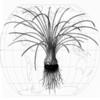| Publication Type: | Journal Article |
| Year of Publication: | 2010 |
| Authors: | K. G. Karol, Arumuganathan, K., Boore, J. L., Duffy, A. M., Everett, K. D., Hall, J. D., Hansen, S. K., Kuehl, J. V., Mandoli, D. F., Mishler, B. D., Olmstead, R. G., Renzaglia, K. S., Wolf, P. G. |
| Journal: | BMC Evolutionary Biology |
| Volume: | 10 |
| Issue: | 1 |
| Date Published: | 2010/// |
| Abstract: | Background. Despite considerable progress in our understanding of land plant phylogeny, several nodes in the green tree of life remain poorly resolved. Furthermore, the bulk of currently available data come from only a subset of major land plant clades. Here we examine early land plant evolution using complete plastome sequences including two previously unexamined and phylogenetically critical lineages. To better understand the evolution of land plants and their plastomes, we examined aligned nucleotide sequences, indels, gene and nucleotide composition, inversions, and gene order at the boundaries of the inverted repeats. Results. We present the plastome sequences of Equisetum arvense, a horsetail, and of Isoetes flaccida, a heterosporous lycophyte. Phylogenetic analysis of aligned nucleotides from 49 plastome genes from 43 taxa supported monophyly for the following clades: embryophytes (land plants), lycophytes, monilophytes (leptosporangiate ferns + Angiopteris evecta + Psilotum nudum + Equisetum arvense), and seed plants. Resolution among the four monilophyte lineages remained moderate, although nucleotide analyses suggested that P. nudum and E. arvense form a clade sister to A. evecta + leptosporangiate ferns. Results from phylogenetic analyses of nucleotides were consistent with the distribution of plastome gene rearrangements and with analysis of sequence gaps resulting from insertions and deletions (indels). We found one new indel and an inversion of a block of genes that unites the monilophytes. Conclusions. Monophyly of monilophytes has been disputed on the basis of morphological and fossil evidence. In the context of a broad sampling of land plant data we find several new pieces of evidence for monilophyte monophyly. Results from this study demonstrate resolution among the four monilophytes lineages, albeit with moderate support; we posit a clade consisting of Equisetaceae and Psilotaceae that is sister to the "true ferns," including Marattiaceae. © 2010 Karol et al; licensee BioMed Central Ltd. |
| URL: | http://www.scopus.com/inward/record.url?eid=2-s2.0-77958040395&partnerID=40&md5=7fe6395cd1fba5cb681722dcc63ac6ec |
